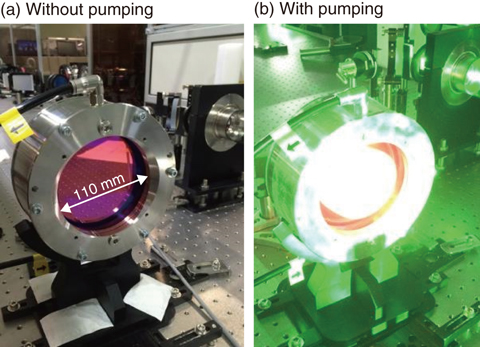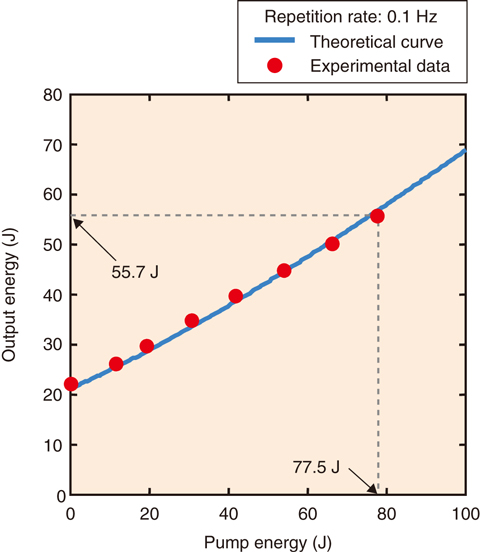
Fig.5-27 A T:Sap crystal for energy amplification in J-KAREN-P

Fig.5-28 Output energy from the final Ti:Sap amplifier
A super-strong electromagnetic field is created when an ultra-high-intensity laser is focused down to a very small area. High-energy particles such as electrons and ions as well as X-rays are generated by the interaction of atoms with the electric field in this condition. We have developed the world’s top-class ultra-high intensity and ultra-short-pulse laser (J-KAREN) to realize an unexplored super-strong electromagnetic field of 1022 W/cm2 for generating higher-energy particles. In the J-KAREN-P, the goal is to generate a 1015 W (1 PW: petawatt) ultra-high-intensity pulse at a 0.1-Hz repetition rate (0.1 Hz) by concentrating 30 J of energy into an ultra-short pulse duration of 30 fs (fs = 10-15 s).
A titanium-doped sapphire crystal (Ti:Sap crystal) is used for energy amplification of the laser. The energy is stored in the Ti:Sap crystal when the crystal is pumped by green lasers (Fig.5-27). Energy amplification occurs owing to stimulated emission when the laser passes through the pumped region. In J-KAREN-P, the laser energy is increased by gradually increasing the laser-beam size.
Before now, the laser was fired every 30 min owing to thermal distortion in the glass-laser material because a large-aperture glass laser was used for pumping the final Ti:Sap amplifier. With this upgrade, thermal distortion is significantly suppressed and the laser can be fired at 0.1 Hz because the pump-glass laser was divided into 6 lasers with small aperture.
Furthermore, the energy loss due to parasitic oscillation in the large-aperture Ti:Sap crystal was suppressed by putting a light-absorption-liquid (methylene iodide) around the crystal. As a result, the output energy as a function of pump energy is achieved according to theory at 0.1 Hz (Fig.5-28). The throughput is about 70% to obtain compression pulse of 30 fs after amplification. Thus, the design goal of 30 J of compressed energy at 0.1 Hz and PW-order peak power can be expected because of the achievement of a 55.7-J output energy (pump energy 77.5 J).
With this, the world’s best-performing laser developed by our research; rapid progress in the study of new phenomena under unexplored super-strong electromagnetic fields is expected, together with various applications, such as a compact particle accelerators or cancer-therapy machines.